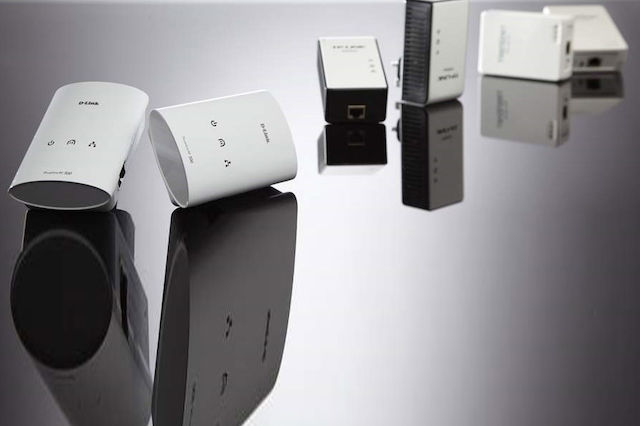How to protect your electrical devices from power surges and outages
by Kostas Skiadas
Electricity in our country is unpredictable, mainly due to the unique geographical structure of the mainland areas and the islands, and often due to weather phenomena or natural causes that cause damage to the network. These power outages or, in some cases, sudden voltage changes, can cause significant damage to any electrical and electronic device.
Certainly many of us have heard at least one story in our immediate environment, where an electrical device "gave up the ghost" after a sudden fluctuation in the electrical voltage. These include devices that we all have in our homes or offices, such as a computer, a telephone, an electric stove, a refrigerator, a television, etc. However, just like in the case of data backup, where if you don't experience it, you won't learn it, in this case, we are unaware that with a reasonable cost, we can take the necessary measures to properly protect our sensitive electrical devices.
Disturbances in the voltage of the electrical current are inevitable, not only in the case of emergencies, but also under normal operating conditions. Only a few of the reasons we can "suffer" are:
- when lightning strikes in extreme weather conditions
- with the presence of birds causing a short circuit
- in the case of underground cable or overhead power line cuts by the Public Power Corporation
- when power is restored after an outage
Although most modern electrical devices incorporate voltage stabilization circuits to prevent problems caused by disturbances, this protection is often not enough. In fact, the Public Power Corporation itself recommends disconnecting our devices from the socket during power outages, which is not always feasible and certainly not practical.

But what should we do to keep our minds at ease?
Let's see some useful information about protecting our sensitive electrical and electronic devices.
Lightning Rod
Without going into the process of analyzing difficult technical terms, the first appropriate step is always considered to be the installation of a lightning rod in the electrical panel of our home, in order to protect the electrical and electronic components from the overvoltage that a lightning strike may create. The role of the lightning rod is to conduct the current caused by the lightning to the ground, and in a very short time.

For the selection and installation of the most suitable solution for our home, it is better to consult our electrician, who will inform us about the type and equipment required in the power panel for our own home.
Of course, before purchasing the relevant materials, we can take a first look at the available surge protectors, to have an idea of the cost.
Safety power strips
A very popular solution is safety power strips (Surge Protection, Surge Arrest), which are not a panacea. The goal of a good power strip is to protect our electrical and electronic devices that are powered by 220V from lightning strikes and network surges.
In fact, some of them have built-in automatic fuses to protect against circuit overload and potential damage to the cables. So, when consumption exceeds 3500W, the supply is immediately interrupted and we need to restart the power strip after disconnecting one or more devices.
It should be noted here that most safety power strips on the market do not protect our devices from any voltage fluctuations in the network, and serious problems can often occur due to questionable build quality.
Tip: many safety power strips also provide additional protection for televisions or our telephone line from radio interference.
UPS (Uninterruptible Power Supply)
The surge protector will protect our electronic devices from a sudden power surge, but an UPS (Uninterruptible Power Supply) is what will keep our devices active and protected even when there is no power.
In recent years, UPSs have been very successful thanks to their capabilities and significantly reduced prices compared to the past. Their main advantage is to ensure a stable voltage and uninterrupted power supply in case of a power outage. They achieve this mainly thanks to the battery included in each UPS unit, which depending on the model, has a lifespan of at least one year.
Of course, not all UPS devices are the same and their differences lie in their size, the number of outlets (schuko), the response time after a power interruption or fluctuation, and the load protection, with the corresponding variation in their cost.
UPS devices are divided into three main categories:
- Line Interactive UPS, which provide stable protection as they are permanently inserted between the power line and our devices, while the battery they have ensures a few extra minutes of power supply.
- Stand-by UPS, which are usually the most affordable solution, as they are activated as soon as they detect a power interruption or significant fluctuation, but they have limited protection capabilities for multiple or sensitive devices.
- Online UPS, which are more secure and expensive, as they are intended for highly demanding environments, such as corporate IT networks.
The most common use of a UPS at home is when we connect it to a computer, in order to avoid any problems with its operation in case of significant voltage fluctuations. Additionally, using a UPS gives us a few minutes to save any ongoing work or safely shut down an electronic device in case of a complete power outage.

Similarly, it ensures that no damage will be caused to the devices that are often found in our living room, such as a good TV, home cinema, video game console, and stereo system, in case of a significant voltage fluctuation or power interruption/restoration.
Tip: After considering which and how many devices we will connect to the UPS, it is good to choose one that has at least 2 or more ports than we will need, to be covered for the future.
Another advantage of the UPS is the ability to filter the power contained in telephone or network cables, which can sometimes lead to the "burning" of our telephone device, or another (more important for many) device, such as the router.
Tip: The number of schuko (sockets) that a UPS has is a basic criterion for our choice. However, we must make sure that the protection covers all available sockets, as there is a possibility that some may not be included in the battery protection.
You may have noticed that UPS units are mostly accompanied by indications in Volts-Amperes (VA) and not in Watts (W). VA describes the apparent power consumed by the device, while Watts describe the real power. The ratio of real power to apparent power gives us the power factor (PF). For example, a device may "draw" 10 Amps from the grid, but this does not necessarily mean that the 10 Amps actually produce work.
Tip: We record the VA or Watt ratings of each electronic device that we will connect to the UPS by referring to its specification card/table, in order to know how much total power they consume. The card is usually stuck somewhere on the device or in its manual. This is important because if the power is greater than the UPS battery, then in the event of a power outage, no device will remain active.
Additional Features and Warranty
For most of us, a UPS for home use does not need to have many capabilities, as long as it protects our devices. However, with a little research, you will see that many models on the market, even the simplest ones, have additional features that may prove useful, such as battery disconnect notification, connection to the PC for customization, or built-in display for quick access to information such as battery level or consumption.
Another important factor to consider before purchasing is the warranty for the equipment connected to our UPS, which may be provided by the respective manufacturer. The warranty may vary by manufacturer, but before using your new UPS, carefully read the terms of use of the warranty, so that you know in which cases you are entitled to compensation in case of malfunction.
These are the most common ways to protect our electrical devices from voltage disturbances. Choosing at least one of the above solutions significantly reduces the risk of overloading electrical and electronic devices in the home or office, which may result in serious malfunction.
Certainly, the combination of the above suggestions, depending on the needs and capabilities of each of us, is considered a preferable solution to have peace of mind!





Be the first to leave a comment!